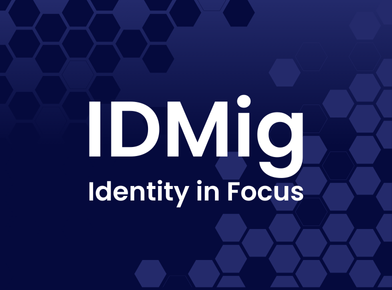We asked our champions for their best advice on How to Start an Identity-Centric Security Program. See below for their responses and we’d love to hear your perspective, too! Share your response on Twitter and join us in raising awareness of the importance of identity management and securing digital identities by sharing all of your best practices and advice on Twitter or LinkedIn using #BeIdentitySmart.
#BeIdentitySmart Week aims to spotlight the importance of identity security as part of Cybersecurity Awareness Month. Each day during the week we will focus on a specific aspect of identity security, posting blogs from the IDSA and the identity and security community, as well as crowdsourced advice from our Identity Management Champions.
“A viable identity-centric security program must have access to ample real-time user behavior data, along with powerful algorithms that can verify users instantaneously and detect attacks preemptively. In today’s world, this also means adhering to finicky four-letter data privacy acronyms like GDPR and CCPA. Deployment is another important consideration. Identity fraud doubled from 2019 to 2020 and customers are more likely to adopt a solution that utilizes a devops deployment model (fast) rather than a legacy deployment model (slow). The key word is easy: easy to integrate, easy to use, easy to test, easy to patch, and easy to deploy.”
– Ari Jacoby, CEO, Deduce
“The first step is identifying where identities exist and if their level of access is justifiable. Next, figuring out how many of those identities each user interacts with is critical to ensure that each identity’s day to day activities are within normal confines, which also works to reduce the number of accounts. Then, identify all applications and resources that each identity requires. Once each identity is mapped to/from accounts, roles, and users, one can ensure that the right users only have access to the right resources for the right reasons at the right time with a comprehensive audit trail and login.”
– Rod Simmons, Vice President of Product Strategy, Omada
“Before even starting an identity-centric security program you need well-defined identities. Do you have a well-defined IAM process in place to address the lifecycle of your identities from beginning to end? Once you have that, the first step usually consists of defining the scope required for your program. If it’s a far-reaching scope, you need to take your plan step-by-step with clearly defined goals and expected outcomes.”
– Nicolas Malbranche, Senior Product Manager, Axiad
“Due to the complex nature of cloud environments, having visibility into which identities have access to data and resources is increasingly difficult. Organizations need to secure all crown jewel data and enforce policies to prevent unauthorized access to the cloud environment.”
– Eric Kedrosky, CISO and Director of Cloud Security at Sonrai Security
“An effective identity-centric security program starts by considering the basics of asset management. Asset management not only applies to computers and software, but also to people and their associated identities, as well as non-human identities that reside within an organization. Implement a process to inventory identities and keep the information up-to-date. Once you have an understanding of all your identities– on premise, in the cloud, hybrid, and even for vendors, contractors, and auditors–you can build an identity-centric plan that best fits your organization.”
– Morey Haber, CISO, BeyondTrust
“Today’s enterprises need to assess their identity security capabilities, including any visibility and detection of gaps that attackers could exploit. They should start by establishing their policies and utilizing tools that can find misconfigurations, exposures, and issues related to policy drift. Implementing proper visibility tools can close many unattended identity risks and gaps, providing a network visibility boost and the ability to detect live attacks in real-time. Preventing an identity-based attack includes continuous Active Directory vulnerability assessment, live attack detection, and the ability to identify exposed administrator credentials and lateral movement attack paths. Identity assessment tools can efficiently provide this functionality and make it harder than ever for attackers to escalate their attacks.”
– Carolyn Crandall, Chief Security Advocate, Attivo Networks
What is your advice for How to Start an Identity-Centric Security Program? Share your response on Twitter! And join us in raising awareness of the importance of identity management and securing digital identities by sharing all of your best practices and advice on Twitter or LinkedIn using #BeIdentitySmart.







